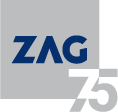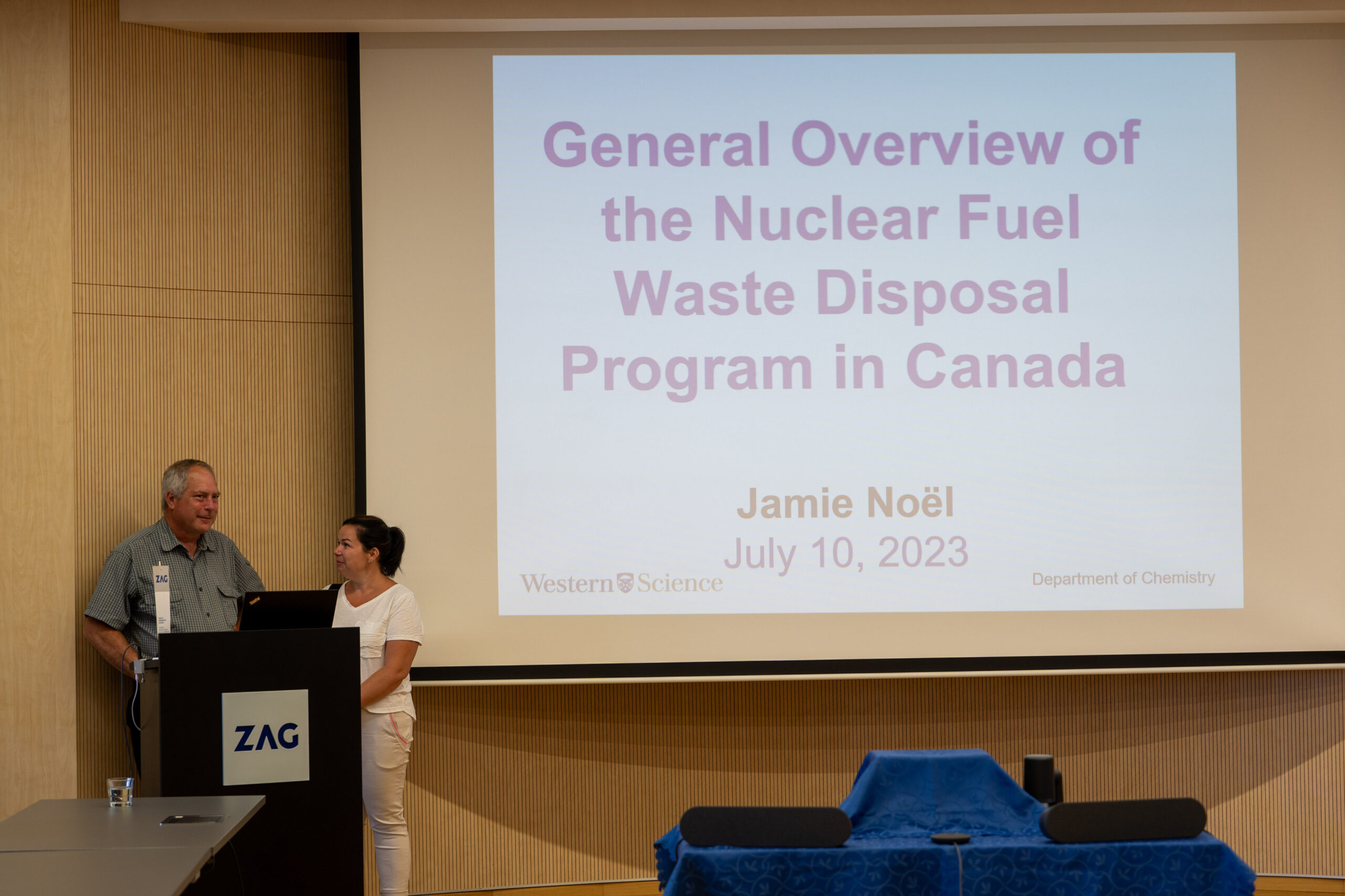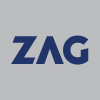Dr. Jamie Noël, University of Western Ontario, Canada lectured at ZAG
11.07.2023
On Monday, 10 July 2023, Prof Dr Jamie Noël from the University of Western Ontario, Canada, gave a lecture at ZAG. In his lecture entitled “Nuclear Waste Disposal – Research and Development“, he presented the Canadian approach to spent nuclear fuel disposal and research for the long term prediction of corrosion damage on spent nuclear fuel storage casks.
Find out more about the content of the lectures:
Presentation of the Canadian spent nuclear fuel disposal programme
The Canadian programme for the disposal of high-level radioactive waste and spent nuclear fuel provides for its isolation in deep repositories after prior information and consent of the local population. In the past, the Canadian concept was similar to the Swedish and Finnish concept of a double-walled container, where the inner (load-bearing) steel wall was covered by an outer copper cladding to provide greater corrosion resistance. In 2015, Canada changed the design of the container, which now consists of an inner steel wall covered by a thinner copper cladding. These changes required the development of new inspections and corrosion studies in order to evaluate the corrosion process on copper. This talk will present the Canadian programme and the ongoing corrosion research.
Investigations of atmospheric corrosion by quartz microbalance and measurements of hydrogen absorption in Cu by in situ neutron reflectometry
This lecture covered two main topics: new techniques being developed for the detection and quantification of atmospheric corrosion and the presentation of a modified, indirect method for the observation and measurement of hydrogen absorption in Cu.
The use of a quartz microbalance to observe and measure moisture adsorption on metal surfaces in salt contamination and the subsequent development of atmospheric corrosion, all with sub-atomic monolayer sensitivity, was presented. The methodology was demonstrated and illustrated with examples from investigations of potential Cu corrosion processes in the Canadian nuclear waste management programme.
Corrosion in aqueous solutions often produces hydrogen atoms. Most of these recombine into hydrogen molecules, but a small fraction of the atoms may be absorbed into the metal, generally leading to a deterioration of the mechanical properties of the metal and, in some cases, to the formation of bubbles within the metal and to the delamination of metallic materials. The study of hydrogen absorbed in metals is very challenging because few analytical techniques can detect it. In situ neutron reflectometry is an analytical technique that allows the concentration of hydrogen in a metal to be determined non-destructively. This presentation will present the measurement of the hydrogen concentration in Cu during electrochemical testing in a corrosion cell. The normal detection limit for hydrogen in neutron reflectometry is about 1 atomic %, and how this limit has been lowered will be presented.
The lectures were attended by a Slovenian scientific audience interested in this specific challenging topic.






